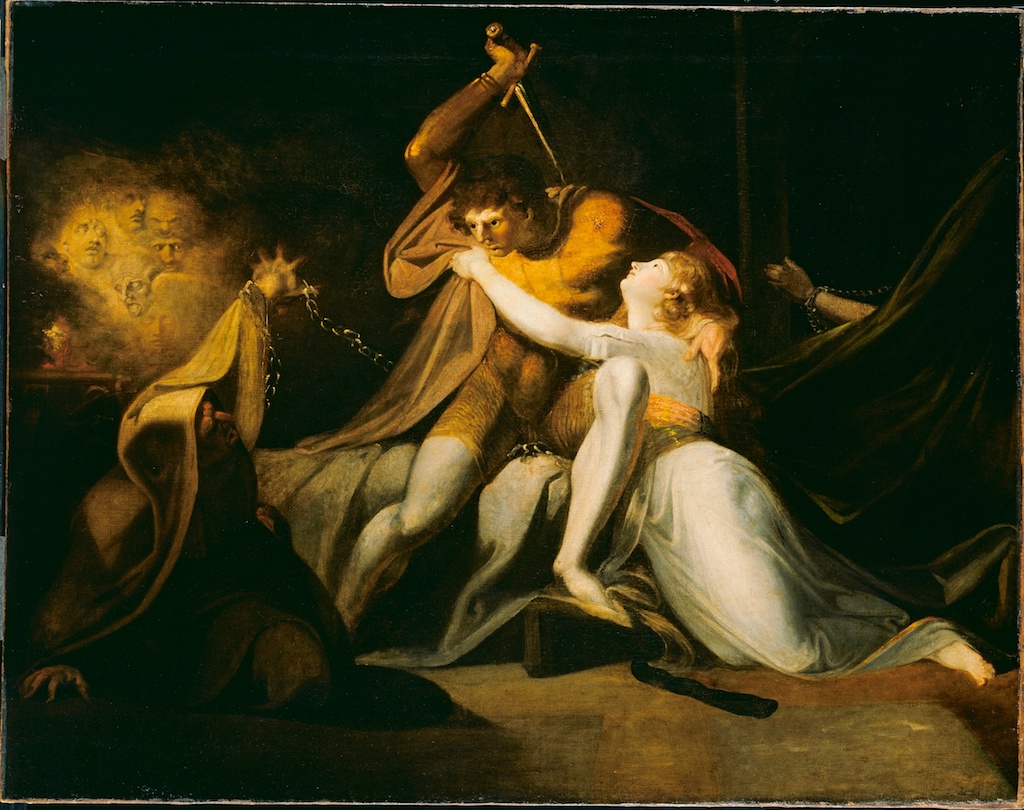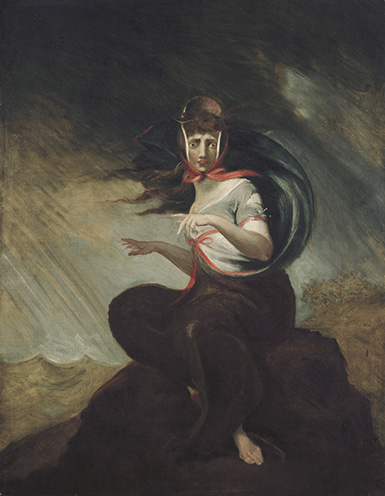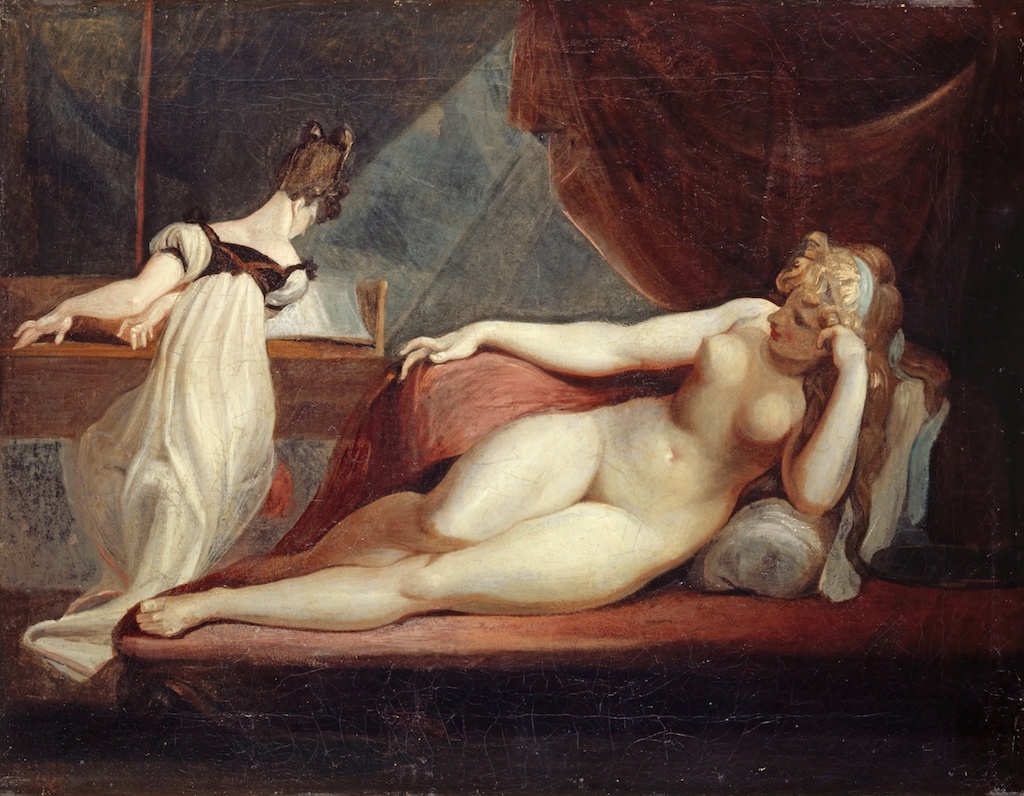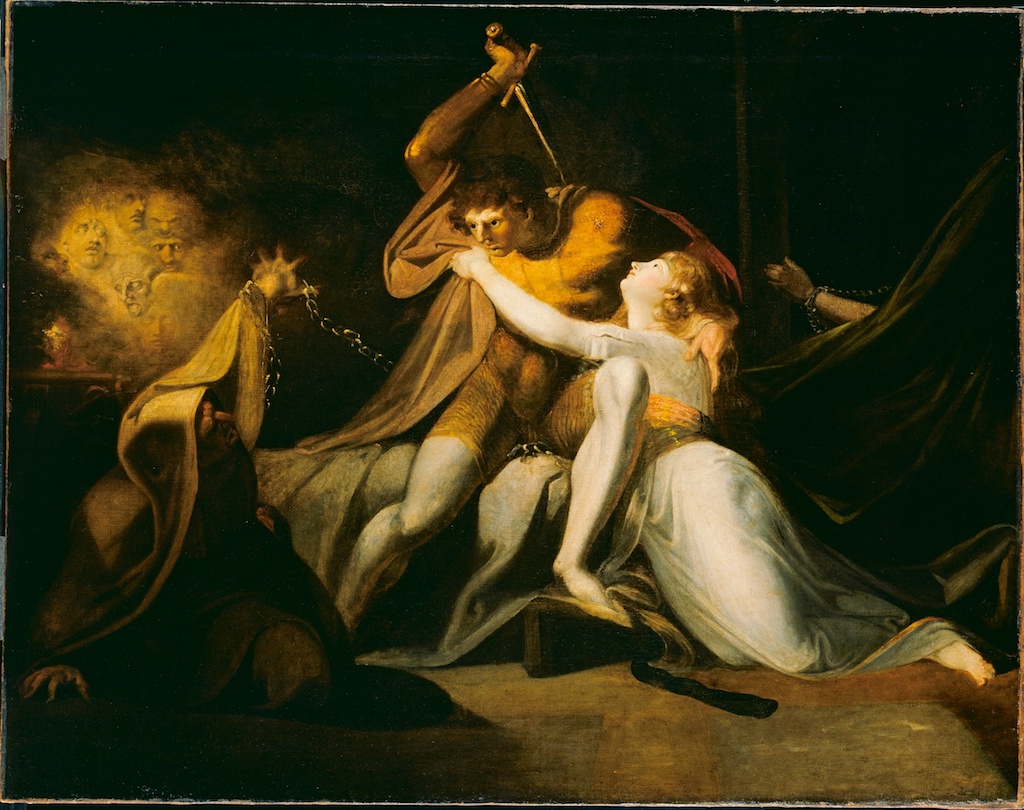[ad_1]

Henry Fuseli, Percival Delivering Belisane from the Enchantment of Urma, 1783, oil on canvas.
TATE, LONDON
Henry Fuseli’s paintings have long perplexed art historians for the ways they elude being neatly fit within the styles of either Neoclassicism or Romanticism—two movements that occurred while the Swiss painter was working during the late 18th and early 19th centuries. With a survey of Fuseli’s work opening at the Kunstmuseum Basel in Switzerland on Saturday, we are republishing an essay about the painter by the artist Mario Praz that appeared in the January 1953 issue of ARTnews. In his essay, Praz notes the ways in which Fuseli’s canvases, which often include supernatural happenings and erotic imagery, have influenced “a generation which has grown up on Freud” and seemed to foretell Existentialism, Expressionism, and Surrealism. Praz’s essay follows below. —Alex Greenberger
“Painter ordinary to the devil”
By Mario Praz
January 1953
Füssli, or Fuseli, according to whichever spelling he found made his name easier for the foreigners among whom he spent his life, was born in Zurich in 1741. He studied with Bodmer and, in this pre-Romantic circle, drank in Shakespeare and Milton. He started out as a poet, in the manner of Klopstock, and in 1761 was ordained a Lutheran minister. By this time he had already begun to draw, but only as a hobby. In 1763, after he had exposed a magistrate’s corruption without passing through the proper channels, he was advised to leave Zurich and went in the following year to England. He was twenty-three years old and thought of literature as his profession.
He went to Italy in 1770, at the advice of Reynolds, who upon seeing some of his drawings said that he had it in him to be the greatest painter of his time.
“Fuseli in Rome is something strange and wonderful,” Lavater wrote to Herder in 1773. “He is everything to an extreme, and always completely original; a painter of Shakespeare . . . Some day I’ll send you his letters, which are all fire and flames . . . He looks down on everything and everybody . . . He has devoured all the Greek, Latin, Italian and English poets. His look is lightning, his words are thunder; his wit spells death and his revenge, hell. No one can stand up to him. He cannot draw in a single breath of common air.”

Henry Fuseli, Die wahnsinnige Kate (The Crazy Kate), 1806–7, oil on canvas.
URSULA EDELMANN/©FREIES DEUTSCHES HOCHSTIFT AND FRANKFURTER GOETHE-MUSEUM
In other words, this short little man with the leonine head was a sort of Stürmer and Dränger whose motto was: “Darkness be thou my light!” In comparing him with the young Goethe, Lavater went so far as to say that although Goethe was more of a man, Fuseli was a greater poet.
The acquaintance of these two was not to last long. Although Goethe at first admired Fuseli’s sketches and acquired a great number of them, he later judged him an eccentric who had made himself into his own parody. And Fuseli, because he could not bear to be overshadowed and to admit the preponderance of Goethe, separated himself from the Romantic movement. He spent the years 1770 to 1778 in Italy, most of them in Rome, where his artistic experience may be summed up in two works: the Sistine Chapel and the colossal horses atop the Quirinal. He was completely carried away by Michelangelo, and proclaimed him greater than the Almighty.
From his return to London in 1779 to his death in 1825, Fuseli led an uneventful life, with the climax of his success coming around 1795. He was made an Academician and professor of painting, and in 1804 Keeper of the Royal Academy. In his Romantic period he had written to Lavater that he expected to die young, but later it seemed to him that his life was unending. (“My spirit will never lose the fire of eternal youth.”) He’d believed in immortality because an earthly life was not long enough to exhaust the energy and gifts with which God had endowed him.
As an expatriate from his own land and always a foreigner, with an elusive double name, in the land of his adoption, Fuseli was quickly forgotten. In England, William Blake, who had a temperament akin to his and was somewhat of a pupil, handed down a reputation for greater originality. And he received neither recognition nor honor in Switzerland until the first exhibition of his work in Zurich in 1926, which marked the beginning of a vogue whose repercussions are still felt today. Because his most impressive subject (one which won fame as soon as it appeared in 1782 and retained it even during the years he was forgotten) is titled Nightmare, and he is quoted as having said “One of the most unexplored realms of art is the realm of dreams,” a generation which has grown up on Freud has claimed for its own. Likewise, because his anatomy was influenced by Michelangelo and by the brutal gestures which he saw in the London performances of Shakespeare’s plays, the Expressionists hail him as their ancestor, in which they are quite right, for his heroes have something of the titanism of the Superman about them. And the Surrealists have an equally good case, for the violent action of his stories, inspired by Nordic or Homeric myths and the supernatural elements of Milton, seems to take place in an abstract, cataclysmic, magical world, and his heroes and heroines deck themselves out in bizarre clothes, with towering headdresses that seem to be beetle sheathes or sea anemones. (Fuseli had a fetish for styles of combing the hair). Probably the Existentialists, too, are intrigued by the intensity of the passions with which he endows his diabolical creatures.

Henry Fuseli, Resting Woman and Piano Player, 1799/1800, oil on canvas.
MARTIN P. BÜHLER/KUNSTMUSEUM BASEL, PURCHASE
Biographers suspect that there was a mystery in Fuseli’s life, one which they guess at through some of his drawings which are not suitable for publication. “There was Evil in him,” says Haydon, and even without penetrating it completely, we can see eloquent signs in the violence, cruelty and extravagance of some of his work. The painter of nightmares is obviously a contemporary not only of the painter of the Caprichos but also of the writers of the “black novels” and the Marquis de Sade, with their world of tyranny and fatality, of prisons and figures outside the law, all reflecting a state of things which led up to the French Revolution and impinges upon the world of today, with its iron curtains, atom bombs and nightmare of uncertainty and destruction. Of course Fuseli is too theatrical to attain the tragic depth of Goya, although this theatrical quality is not static, like David’s tableaux vivants, just as his violence is a far cry from the maniacal obscenity of the Marquis de Sade and, indeed, is limited to an emotional and watered-down imitation of Michelangelo.

Henry Fuseli, The Sleepwalking Lady Macbeth, ca. 1783, oil on canvas.
LOUVRE, PARIS/PHOTO: ©RMN-GRAND PALAIS, HERVÉ LEWANDOWSKI
When Wordsworth heard Haydon quote Canova’s opinion that Fuseli had more flame and Raphael more fire, he said: “There’s one other thing, and that’s smoke, of which Fuseli has a superabundance.” He was magniloquent in the manner of Piranesi and the best way to describe his characters is as men fit to inhabit Piranesi’s Prisons. For these men are galvanized robots, they have something of the nature of insects, the only small creatures which he admired (he was totally indifferent to flowers). His heroes incline to be posed and draped; there is a remnant of Classicism about them, which in Blake is even more persistent.
In theory, Fuseli was a Neo-Classicist. (I must refer here to the excellent anthology of his writings, The Mind of Henry Fuseli, by Eudo C. Mason.) True, he gloried in the appellation of “painter ordinary to the Devil” (“Yes, more than once he has posed for me,” he declared); his favorite color was a sickly green like that of mildewed brass; he drew with the dark, bony hand, like a bat’s wing, of which he has left us a likeness; he held that art was the product of cultured depravity, of knowledge rather than vision, and delighted in portraying satanic women. (In a striking story from his Memoirs of Hecate Country, Edmund Wilson lends a female devil the features of an equivocal matron of Fuseli). But in spite of this, he burnt incense at the altars of the Venus de Milo and the Belvedere Apollo; he said that art should have an impersonal and universal aim and that single shapes and forms are only degenerations of a perfect archetype; he criticized the gaunt and awkward deformation practiced by Rembrandt, and held out for historical paintings rather than portraits. All of which he contradicted not only in his own works, which bear witness to an individuality eccentric to the point of idiosyncrasy, but also in many of his aphorisms, where we read that the essence of art lies not in ideal beauty but in expression and spirt, where he deplores the fact that Michelangelo has cut himself off from the variety and modesty of nature and urges every artist to bury himself in the crowd for inspiration (as did Rembrandt).
At the confluence of two rivers, Classicism and Romanticism, there is a curious eddy of waves; call them Fuseli, Blake or what you will. Transitional figures, say the art historians, Mannerists (although Fuseli condemned Mannerism completely), whose twisted, snakelike creatures, like waves, seem to be shaped by two contrary currents and by an interplay of forces which affect these two artists, apparently so individual, just as much if not more than the others.
A version of this story originally appeared in the January 1953 issue of ARTnews on page 33 under the title “Painter ordinary to the devil.”
[ad_2]
Source link

